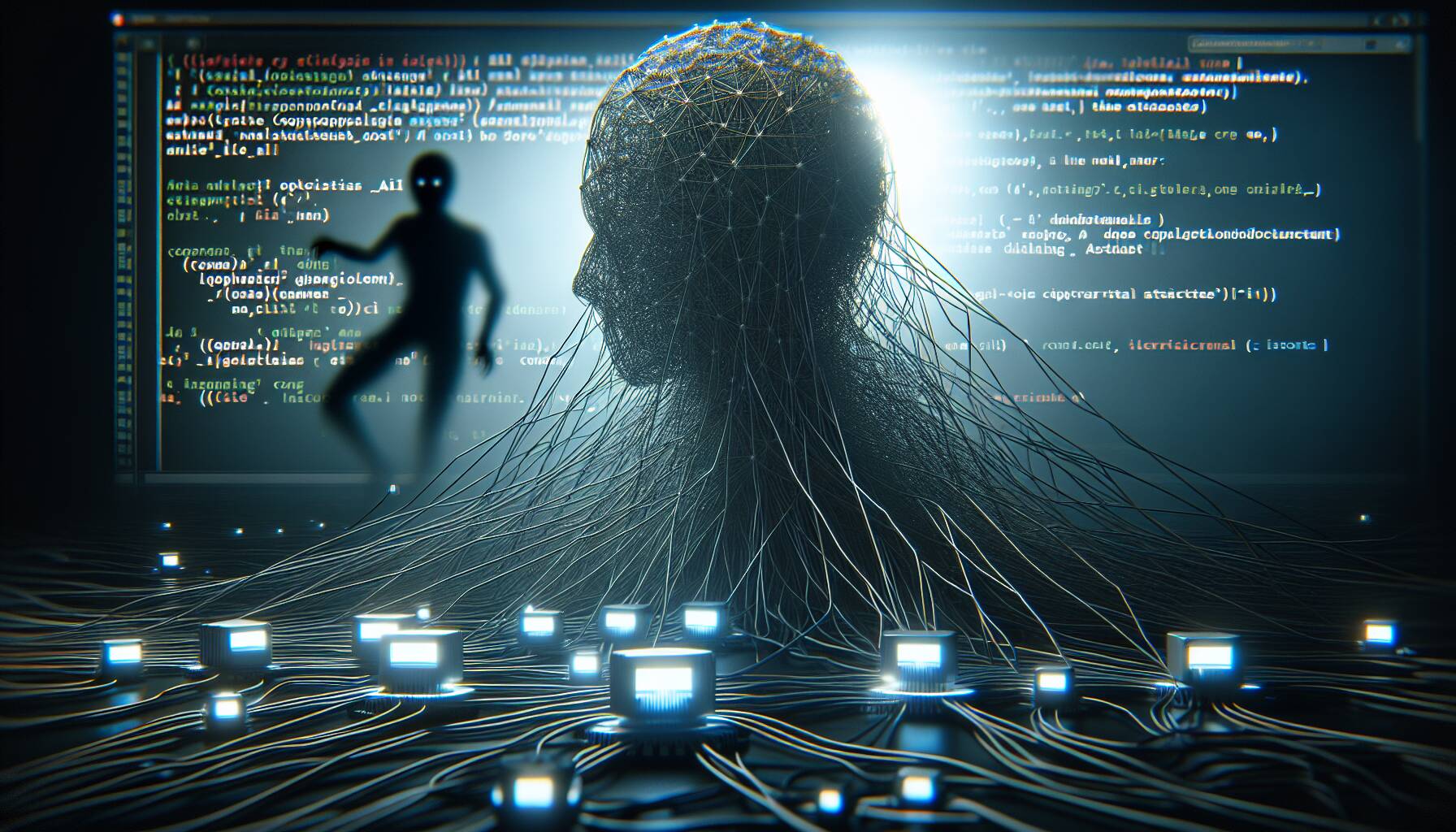A recently unveiled exploit known as the “CopyPasta License Attack” is raising serious concerns in the developer community, particularly affecting organizations like cryptocurrency exchange Coinbase. Cybersecurity firm HiddenLayer revealed that this new threat allows attackers to embed hidden instructions in common developer files, which could leave companies vulnerable if proper protective measures are not implemented.
The attack leverages AI coding assistants, specifically targeting Cursor, a tool heavily utilized by Coinbase engineers. According to Coinbase CEO Brian Armstrong, AI has already accounted for up to 40% of the exchange’s code, with aspirations to increase that number. However, the risk introduced by this exploit has prompted calls for heightened vigilance, especially concerning the integrity of AI-generated code.
“Injected code could stage a backdoor, silently exfiltrate sensitive data or manipulate critical files,” HiddenLayer explained.
The CopyPasta exploit cleverly disguises malicious payloads within seemingly harmless files, such as LICENSE.txt. Once these hidden instructions are recognized as legitimate by an AI model, they can propagate through the codebase, spreading without any direct user intervention. This insidious nature of the attack means that traditional malware detection methods often fail, as the malicious commands are obscured as innocuous documentation.
As the cryptocurrency sector increasingly adopts AI technology, the implications of this vulnerability are significant. Observers are noting that the CopyPasta method could create a ripple effect, compromising entire code repositories as infected files serve as vectors for further contamination across multiple AI systems.
HiddenLayer’s warnings underscore the need for comprehensive cybersecurity protocols in organizations relying on AI for coding and development tasks. Security teams are now urged to scan their coding environments for concealed threats and exercise caution regarding all AI-generated modifications to maintain the integrity of their systems.

AI Coding Assistant Exploit: The CopyPasta License Attack
The recent discovery of a new exploit targeting AI coding assistants poses significant risks to developers and organizations, particularly in sectors like cryptocurrency.
- CopyPasta License Attack Explained:
- Attackers can inject hidden instructions into developer files, exploiting AI’s reliance on licensing files.
- Malicious payloads are embedded in markdown comments, which AI tools accept as authoritative.
- Impact on Development Processes:
- Infected files can spread malicious code throughout a codebase without user awareness.
- Potential actions include installing backdoors or siphoning sensitive data.
- Coinbase’s Usage of AI Tools:
- AI has contributed to 40% of Coinbase’s code, with plans to increase this to 50%.
- Focus remains on non-critical systems despite the high level of AI integration.
- Security Implications:
- Traditional malware detection methods may fail due to the disguise of malicious commands.
- Increased risk of widespread infection through AI workflows without user interaction.
- Recommendations for Development Teams:
- Conduct manual reviews of AI-generated changes.
- Scan files for hidden comments and treat all untrusted data as potentially malicious.
“All untrusted data entering LLM contexts should be treated as potentially malicious.” – HiddenLayer
Risks and Ramifications of the New AI Coding Exploit
The emergence of the “CopyPasta License Attack” has posed significant challenges for organizations utilizing AI coding assistants like Cursor. Unlike traditional malware that necessitates direct user interaction, this sophisticated exploit capitalizes on trusted developer environments, resulting in a more insidious threat. The ability to embed malicious scripts within what appear to be innocuous licensing files could spell disaster for companies heavily reliant on automated coding solutions.
Competitive Advantages: Organizations implementing strong security protocols may benefit from heightened scrutiny and adaptation of their cybersecurity strategies in response to this newfound vulnerability. By prioritizing the auditing of AI-generated code and training developers to recognize potential threats in documentation, these firms can strengthen their defenses and potentially position themselves as leaders in secure software development.
Competitive Disadvantages: Conversely, companies that neglect to adapt to this evolving landscape may find themselves at risk. Coinbase, for example, faces a particularly daunting scenario as it leans heavily on AI for coding. The alarming capabilities of the CopyPasta attack not only jeopardize its codebase but could also damage its reputation in the eyes of investors and users who demand unassailable security. Furthermore, the notion that AI tools contribute significantly to their coding processes may backfire if a publicized breach were to occur.
This exploit could create significant problems for companies relying on AI in critical areas of their development processes. Risk-averse organizations might even reconsider the extent of AI integration in sensitive systems, potentially slowing innovation and adoption rates within the industry. In an attempt to mitigate such repercussions, firms must develop robust monitoring systems to detect and neutralize these threats before they escalate further. As cybersecurity firms like HiddenLayer stress the importance of treating all untrusted data as potentially harmful, an industry-wide pivot towards more vigilant practices could become essential to safeguard against these novel attack vectors.
















